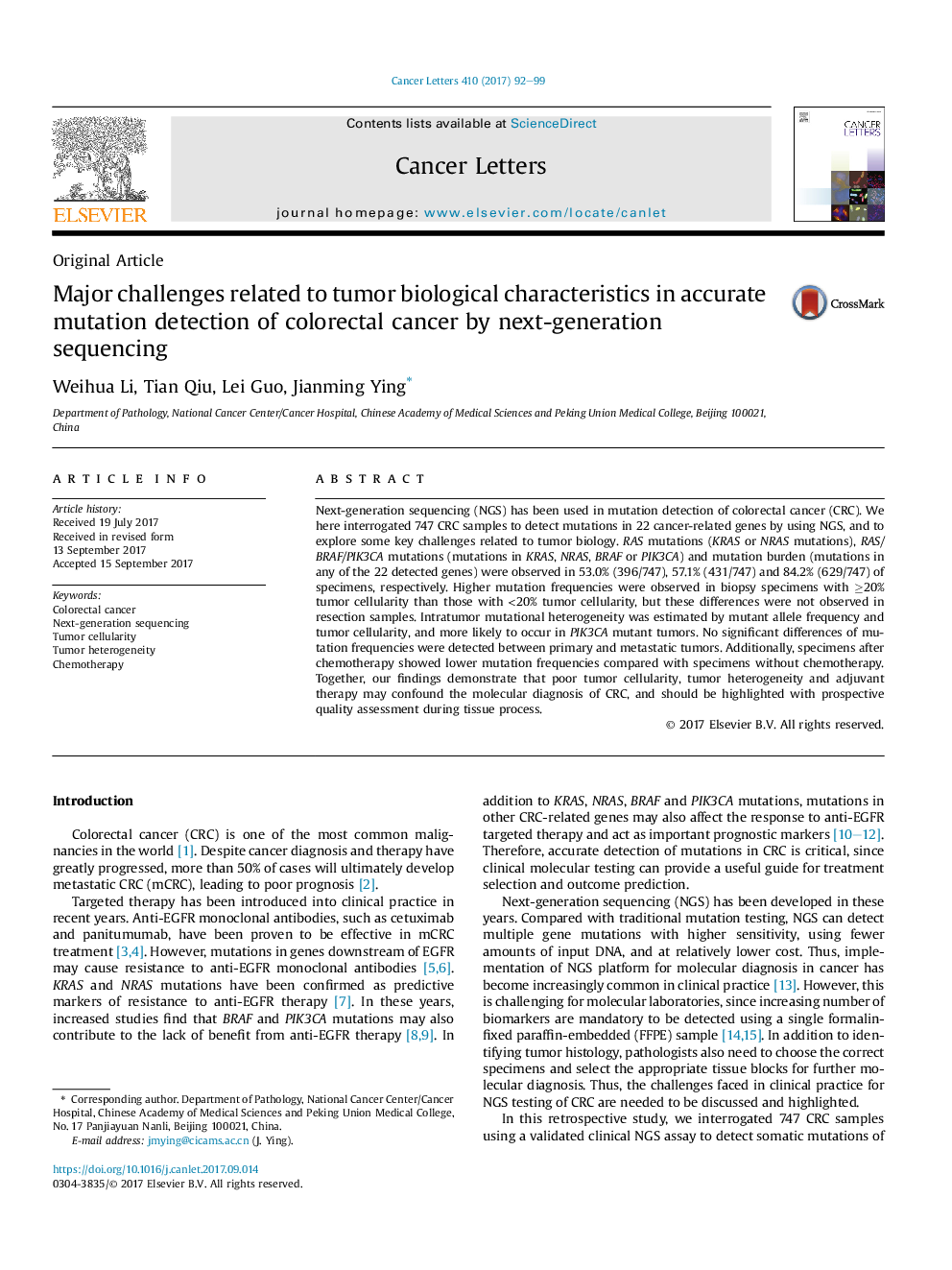| Article ID | Journal | Published Year | Pages | File Type |
|---|---|---|---|---|
| 5525147 | Cancer Letters | 2017 | 8 Pages |
â¢Biopsy samples with â¥20% tumor content show higher mutation frequencies than those with <20%.â¢Intratumor mutational heterogeneity is more likely to occur in PIK3CA mutant tumors.â¢Mutational heterogeneity between primary and metastatic tumors is uncommon.â¢Post-chemotherapy samples show lower mutation frequencies than pre-chemotherapy samples.
Next-generation sequencing (NGS) has been used in mutation detection of colorectal cancer (CRC). We here interrogated 747 CRC samples to detect mutations in 22 cancer-related genes by using NGS, and to explore some key challenges related to tumor biology. RAS mutations (KRAS or NRAS mutations), RAS/BRAF/PIK3CA mutations (mutations in KRAS, NRAS, BRAF or PIK3CA) and mutation burden (mutations in any of the 22 detected genes) were observed in 53.0% (396/747), 57.1% (431/747) and 84.2% (629/747) of specimens, respectively. Higher mutation frequencies were observed in biopsy specimens with â¥20% tumor cellularity than those with <20% tumor cellularity, but these differences were not observed in resection samples. Intratumor mutational heterogeneity was estimated by mutant allele frequency and tumor cellularity, and more likely to occur in PIK3CA mutant tumors. No significant differences of mutation frequencies were detected between primary and metastatic tumors. Additionally, specimens after chemotherapy showed lower mutation frequencies compared with specimens without chemotherapy. Together, our findings demonstrate that poor tumor cellularity, tumor heterogeneity and adjuvant therapy may confound the molecular diagnosis of CRC, and should be highlighted with prospective quality assessment during tissue process.
